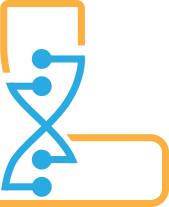A Critical Component for Success

As educational institutions continue to invest heavily in technology to enhance student learning outcomes, it’s essential to strike a balance between the front-end user experience and back-end technical infrastructure. This balance is crucial for ensuring that edtech solutions are effective, efficient, and scalable. In this article, we’ll explore the importance of achieving balance in your edtech strategy and provide practical tips for doing so.
The Front-End Experience: A Shiny Object
The front-end user experience is often the most visible aspect of an edtech solution. It’s what users interact with directly, and it can make or break their overall perception of the technology. As a result, many educational institutions focus heavily on the front-end experience, making sure that it’s intuitive, user-friendly, and visually appealing. However, this focus can sometimes come at the expense of the back-end technical infrastructure.
The Back-End: The Unsung Hero
The back-end technical infrastructure is often overlooked in favor of the shiny front-end, but it’s a critical component of any edtech solution. It’s what powers the front-end experience, enabling features like scalability, accessibility, and integrations with other systems. A robust back-end infrastructure ensures that your edtech solution can handle large volumes of users, accommodate diverse learning needs, and integrate seamlessly with existing systems.
Achieving Balance: A Delicate Art
Achieving balance between the front-end user experience and back-end technical infrastructure requires a delicate touch. It’s essential to strike a balance that meets the needs of both users and administrators. This means considering factors like accessibility, scalability, and integrations when designing your edtech solution.
Accessibility: The Forgotten Component
Accessibility is often overlooked in edtech solutions, but it’s a critical component for ensuring that all students can use the technology. A robust accessibility package should include features like screen reader compatibility, closed captions, and keyboard-only navigation. By prioritizing accessibility, educational institutions can ensure that their edtech solution is inclusive and equitable.
Scalability: The Key to Success
Scalability is another critical component of any edtech solution. It’s what enables the technology to handle large volumes of users without sacrificing performance or functionality. A scalable edtech solution should be able to accommodate growing user numbers, ensure seamless integration with existing systems, and provide real-time analytics.
Integrations: The Key to Success
Integrations are critical for ensuring that your edtech solution can seamlessly integrate with existing systems and platforms. By prioritizing integrations, educational institutions can create a cohesive learning experience that’s both efficient and effective.
Testing and Pilot Programs: A Critical Component
Before implementing any new edtech solution, it’s essential to test it thoroughly and run pilot programs to ensure its effectiveness. This should include testing the front-end user experience, back-end technical infrastructure, and integrations with existing systems.
The Importance of a Balanced EdTech Strategy
Achieving balance in your edtech strategy is critical for ensuring that your technology solution meets the needs of both users and administrators. By prioritizing factors like accessibility, scalability, and integrations, educational institutions can create a robust edtech solution that’s inclusive, efficient, and effective.
Conclusion
In conclusion, achieving balance in your edtech strategy is essential for ensuring that your technology solution meets the needs of both users and administrators. By prioritizing factors like accessibility, scalability, and integrations, educational institutions can create a robust edtech solution that’s inclusive, efficient, and effective.
At LearningXperience Consulting, we believe that the most effective EdTech strategies put people first. By understanding the needs, challenges, and goals of your learners and educators, you can make informed decisions about technology that truly enhance the educational experience.
Ready to develop a human-centered EdTech strategy for your institution? Contact us today to learn how we can help you navigate the complex world of educational technology with purpose and clarity.

